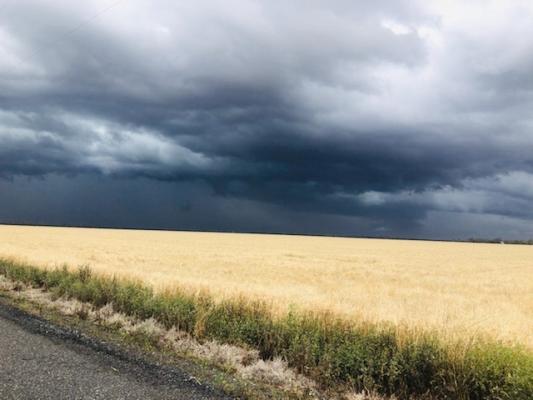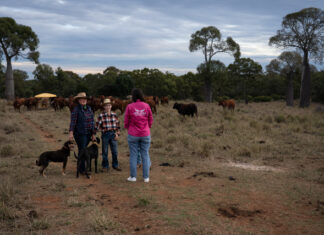
A mixed bag is the most succinct way senior agronomist Andrew Johnston, Dalby Rural Supplies, can describe the 2021 winter cropping season.
After five tough, dry years on the Darling Downs, grain growers planted wheat and barley into juicy sub-soil moisture “earlier than ever” in mid-April following unseasonal March rain.
Hopes remained high with six weeks of steady falls received through May, June and July but, according to Mr Johnston, dry weather since had tempered predictions on later sown crops.
He said early-planted, long-season varieties that exploited the Autumn rain and dodged flukey storms may yield 5 tonne/ hectare but those sown later that copped weather may return 2t/ha.
“Early crops are yielding well – up to 5t/ha for wheat and barley – and, overall, I think it should end up ok,” Mr Johnston said. “Average to above average returns.”
Over the past month, GrainCorp regional operations manager, Brad Foster, has watched loads of grain arrive at the Capella receival site.
He said with most of the central highlands harvest done, the quality had been “good” and the company was optimistic about the season ahead in southern Queensland.
“It was a little bit drier up here (in central Queensland) from a yield perspective,” Mr Foster said. “But quality, particularly through the large amount of chickpeas received, has been good.
“In southern Queensland, the Darling Downs has been slower due to storms but the Western Downs, Miles to Roma, Goondiwindi, St George to Dirranbandi, it’s looking fantastic.
“The rain has kept on coming and they’ve had their best season in many years. Crop conditions are looking good.”
Mr Foster said the sorghum crop harvested in central Queensland from May to July was currently being shipped from the Ports of Gladstone and Mackay into Asian markets.
And, he said the Port of Brisbane was preparing to ship wheat, which may go beyond Asia into the Middle East.
“The market has really opened up for Australian growers this year,” Mr Foster said. “It’s starting to get really dry in the northern hemisphere, and that means good prices for Australian growers.
“So good prices, good yields, good quality … if it stays that way, everyone will be happy.“
The total area sown to winter crops this year was a record 23.3 million hectares, which included a record canola planting of about 5m hectares.
The national commodities forecaster, ABARES, is predicting another bumper crop of around 54.8 million tonnes.






